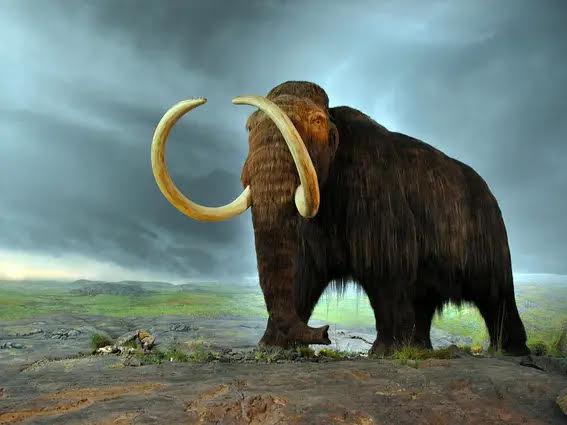There have been many theories surrounding the livelihoods and extinctions of various prehistoric creatures. From dinosaurs to saber-toothed tigers3 to the wooly mammoths; these creatures were among the most terrifying and massive animals of their era. But how do these creatures relate to the effects of climate change in modern-day? According to Smithsonian Magazine, reintroducing prehistoric creatures such as mammoths would help prevent the “release of greenhouse gases from the ground and reduce future emissions as temperatures rise due to climate change. While this might sound like a far-fetched idea, scientists have actually been experimenting with something similar for over 20 years.” A group of geneticists at Harvard University hope to achieve this de-extinction by “cloning living elephant cells that contain a small compound of synthesized mammoth DNA.” (Smithsonian Magazine).
This idea was originally derived from the natural habitat mammoths normally live in; the Arctic Tundra. Arctic lands are commonly covered by permafrost, which is a thick layer of frozen soil. The permafrost usually contains “vast amounts of carbon from dead plant life that is locked away by the extremely cold temperatures” (Smithsonian Magazine). When the permafrost thaws, microbes will break down the organic material and release methane and carbon dioxide (greenhouse gases) into the Earth’s atmosphere. This is why permafrost is considered as a “sleeping giant” since “if they wake up, the resulting greenhouse gas emissions would raise global temperatures even further than currently projected, causing even greater global climate change….”
Mammoths could potentially help prevent this from happening as they are herbivores (so they would consume many of the plants and grasses in the tundra region they live in) and they often trample over many larger brushes and trees, in order to help restore the original tundra steppe environment that they used to live in. By restoring their habitats to the steppe ecosystems they used to live in, mammoths could help encourage the growth of smaller plants and shrubs that don’t take in nearly as much sunlight as larger plants, ensuring that the ground doesn’t absorb too much heat, thus preventing the carbon pools/permafrost from melting as fast as they are currently melting.
Although this is all speculation and highly controversial since this involves the de-extinction of a species, it is a possible solution to the current climate change problem the world is facing. Yet many scientists raise the question: is it really worth resurrecting the mammoth, especially when we consider the high costs of doing so? Is it not possible for existing animals to serve the same purpose? This is also an important point to consider, as it seems to be a huge undertaking to bring back an extinct species, if not, a hybrid. However, climate change is not a small problem and thus would require an ambitious and novel solution to solve it. The debate continues on how we can strive to fight climate change.
Source (for article):
Mann, P. (2018, May 14). Can Bringing Back Mammoths Help Stop Climate Change? Retrieved from https://www.smithsonianmag.com/science-nature/can-bringing-back-mammoths-stop-climate-change-180969072/
Sources (for images):
Image 1 (Mammoth) – https://www.businessinsider.com/why-last-woolly-mammoths-went-extinct-2016-8
Image 2 (Groups of mammoths) – https://www.newsweek.com/last-woolly-mammoths-died-catastrophic-event-1463808



